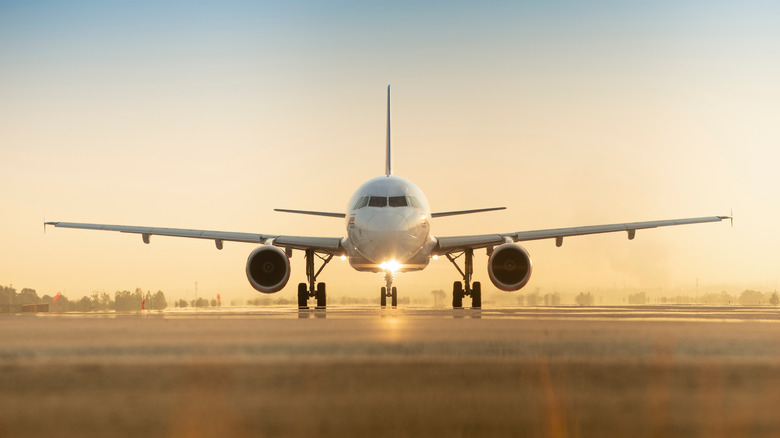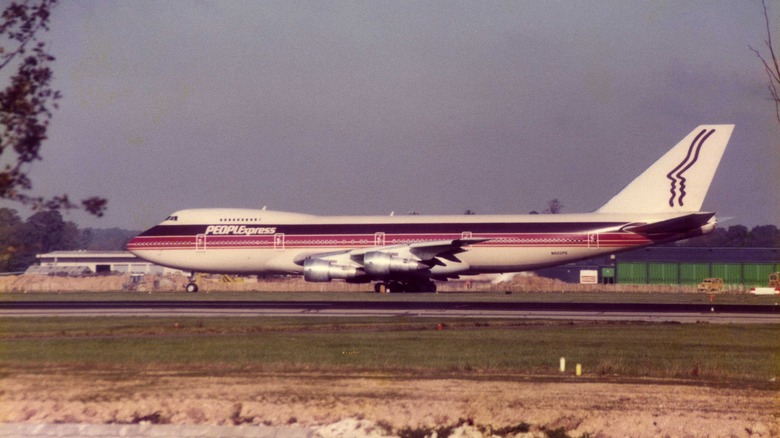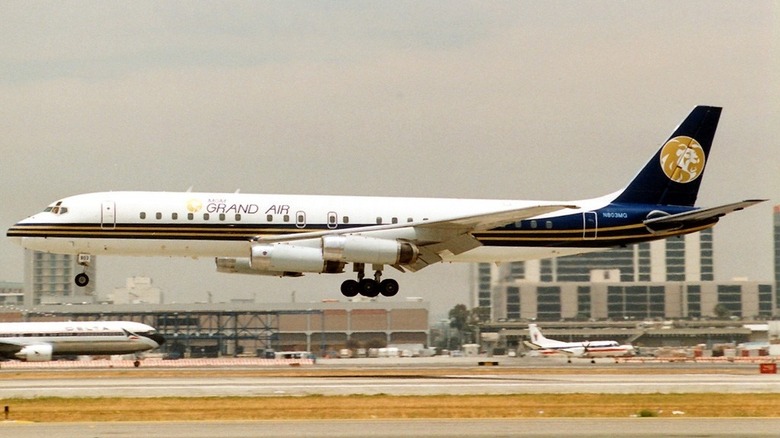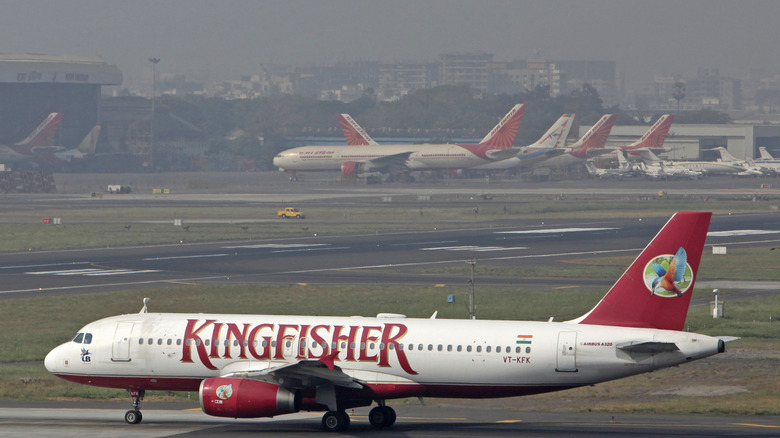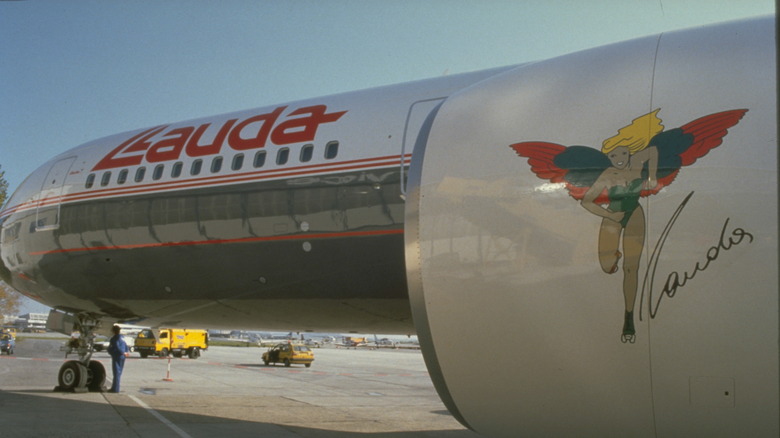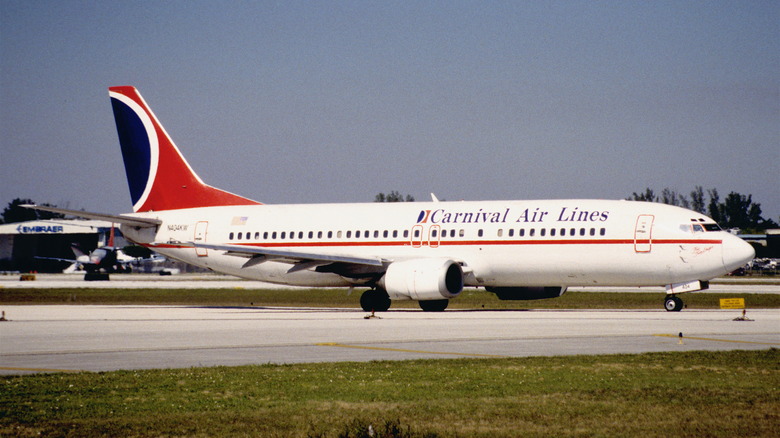5 Forgotten Airlines That Once Soared The Skies
As with every industry, there have been many airlines that presented novel value propositions over the decades of commercial air travel. From low-cost carriers that pioneered a system that is now well-known to low-density luxury carriers, there has been a litany of ideas, though not all of them turned out to be winners for the people who invested in them.
These airlines also differed significantly from the U.S.' Big Three — American, Delta, and United — as well as other global powerhouses such as Lufthansa, Emirates, and others, which gave fliers alternatives to the relatively similar flying experiences they had access to, especially in the U.S. market. However, being different doesn't always pay off.
Combined with the fact that airlines are much more than just companies that fly planes and now rely on other avenues, such as their frequent flier programs and ultra-efficient high-density flights instead of niche services, it becomes easier to understand why the vast majority of modern-day airlines follow similar business models and those that stood out fell by the wayside or were absorbed by the competition.
People Express
People Express was an American pioneer in the world of low-cost carriers that took innovative steps to stand out and attract flyers. Helmed by Don Burr, a former Texas International Airways executive, People Express was launched in 1981 with the goal of providing ultra-low-cost, no-frills air travel to relatively underserved destinations. Passengers would pay cash on board the plane instead of paying in advance or at the check-in counter and would be charged for amenities such as checked baggage and in-flight refreshments — a practice still employed by modern-day low-cost carriers.
The company's structure and operation were also unusually egalitarian, especially for an airline. For instance, staff were given shares in the company, making them all owners of the airline. Beyond their shared ownership of the airline, employees also had shared job roles. For instance, pilots would double as baggage handlers, sales personnel would staff the check-in counter, and members of the finance team would also be flight attendants. These steps were taken to minimize costs and ensure that every employee interacted with the customer, as the airline relied on being people-centric and more than just the corporate behemoths the Big Three had become.
Unfortunately, the Big Three did not take People Express' growth lightly and quickly took steps to counter it, slashing their own ticket prices to neutralize the latter's main selling point. Combined with skyrocketing debts, this led to People Express's sale to Texas Air Corporation, which merged with Continental in 1987.
[Featured image by MercerMJ via Wikimedia Commons | Cropped and scaled | CC BY-SA 2.0]
MGM Grand Air
MGM Grand Air was a luxury airline with three destinations: John F. Kennedy International Airport in New York, Los Angeles International Airport, and Las Vegas. Launched and owned by billionaire Kirk Kerkorian, the airline was designed to fly the rich and famous between the East and West coasts and bring high-value gamblers to his casinos on the Las Vegas strip from LAX.
The ultra-luxury airline offered its wealthy clients opulence in the air, with no more than 33 passengers on any of their Boeing 727s or Douglas DC-8s (variants of which could typically seat up to 155 and 269 passengers, respectively). Flyers were treated to luxuries such as swiveling leather seats, private meeting rooms, queen-size beds, a bar, and gourmet food. They would also be attended to by five flight attendants dressed in tuxedoes.
Ultimately, MGM Grand Air failed to understand its own clientele well enough. With its hyper-limited seating and one-way tickets costing over $1000, the airline could only fly rich clientele, many of whom opted to fly private instead. Meanwhile, those who didn't own or charter their own jets would likely choose the first-class offerings of other airlines, which would give them more flexibility and frequent-flyer miles. Due to its unsustainability, MGM Grand Air was sold off. It later became Champion Air, which had far more diverse clientele, ranging from the NBA to the U.S. Justice Prisoner and Alien Transportation System — better known as Con Air.
[Featured image by Richard Silagi via Wikimedia Commons | Cropped and scaled | CC BY-SA 4.0]
Kingfisher Airlines
Kingfisher was an Indian airline that shared its name with a brand of beer brewed by United Breweries Group, which was helmed by Vijay Mallya. At the time of its launch in 2005, Kingfisher Airlines offered flyers a simple value proposition — glamor. At the time, Indian airlines did not offer their customers a particularly appealing experience. On top of this, the Kingfisher brand was already synonymous with good times and the high life, thanks to its beer being the most popular in India and Mallya's own public image. The airline offered good service, with plenty of its own beverages available on flights.
What sets Kingfisher apart from many other airlines is not its service per se but the story of its collapse. Having grown to be the second largest carrier in the Indian domestic market (even achieving the Number 1 spot in 2009), Kingfisher collapsed in 2012 when it came out that the airline was in deep debt and was in no position to pay its lenders or staff. Mallya subsequently fled to the UK, defaulting on over $1 billion in debt.
It turned out that the self-proclaimed "king of good times" had diverted funds that had been borrowed to keep Kingfisher aloft to finance other interests, such as his Formula 1 team Force India and his private jet. The resultant financial and legal troubles led to the shutdown of the airline, the sale of its dubious assets, and the continued exile of India's Richard Branson.
Lauda Air
Formed in 1979, Lauda Air was the first of Formula 1 legend Niki Lauda's three ventures in the world of commercial aviation. A licensed commercial pilot himself, Lauda had a keen interest in the field, which led to the formation of Lauda Air. Initially, a charter service that took to the skies in 1985, the airline grew to flying regularly scheduled routes by 1987. By the early '90s, Lauda Air had expanded to long-haul routes across the globe, reaching destinations as far-flung as Australia and even setting up an Italian subsidiary, Lauda Air Italy.
Lauda Air's fortunes took a turn for the worse in 1991 when flight NG004 from Bangkok to Vienna crashed approximately 15 minutes after takeoff. The crash was caused by a malfunctioning thrust reverser, which activated mid-air, causing the plane to go into a vertical nosedive and crash at over Mach 1, killing all 223 people on board. In 2000, Lauda Air was bought out by Austrian Airlines before merging with the airline in 2012. Lauda Air was followed by low-cost carrier Niki (for which Lauda himself would fly at least twice a week), launched in 2003, and Laudamotion, launched in 2018 and shared its name with his unusual car-hire service. It has since rebranded to Lauda and is now owned by Ryanair.
Carnival Air Lines
Owned by a behemoth in the leisure travel industry, Carnival Air Lines had a specific goal at its launch — ferrying passengers to and from ports of call for Carnival cruise ships. Carnival had already been using the airline's services as a chartered feeder system under a long list of names before purchasing the airline in 1988. Initially conceived as Fun Air, the name was changed to Carnival Air Lines by the time the livery was applied to the aircraft. Carnival then flew as a feeder airline for the cruises, as well as to Carnival Founder and CEO Ted Arison's casino resort in the Bahamas.
The airline soon expanded beyond being simply a feeder for the cruises, and by 1996 only 5% of its revenue was coming from passengers being transported to ports to join their cruises, while 75% came from regular travelers using Carnival's scheduled flights, attracted by their low-cost-carrier fares and full service. Unfortunately, by the late '90s, this formula was proving to be less than profitable for Carnival, which began to look for buyers for the airline.
Carnival Air Lines came to an end as a brand in 1998 when its new owner Pan Am Corp, which had bought it in 1997, decided to absorb its services and rebrand the entire fleet as Pan Am in an attempted comeback, which ultimately also fell short.
[Featured image by Aero Icarus via Wikimedia Commons | Cropped and scaled | CC BY-SA 2.0]
